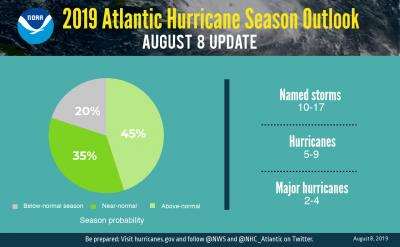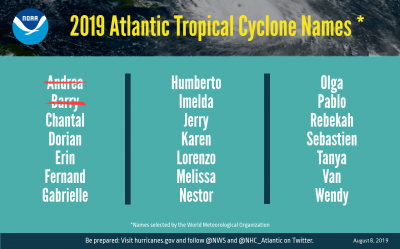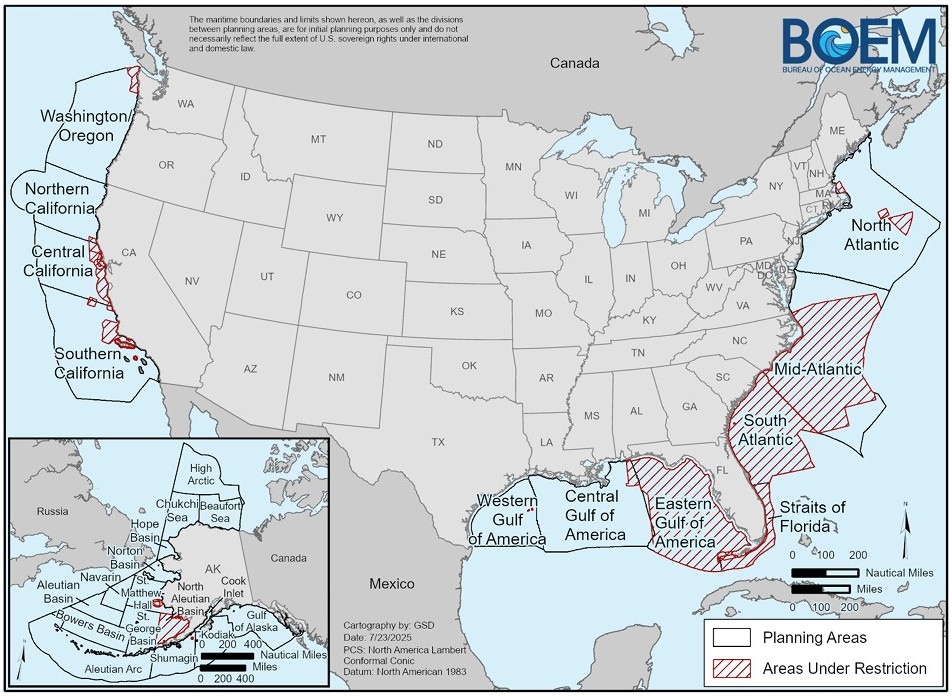Forecasters say atmospheric conditions have become more favorable for above-normal hurricane activity as the busy part of the 2019 storm season begins.
 From now through October is considered the peak of hurricane season, and as the El Nino weather pattern in the Pacific gives way to more neutral conditions, forecasters with the National Oceanic and Atmospheric Administration’s Climate Prediction Center have increased the likelihood of an above-normal Atlantic hurricane season to 45%, up from 30% from the outlook issued in May.
From now through October is considered the peak of hurricane season, and as the El Nino weather pattern in the Pacific gives way to more neutral conditions, forecasters with the National Oceanic and Atmospheric Administration’s Climate Prediction Center have increased the likelihood of an above-normal Atlantic hurricane season to 45%, up from 30% from the outlook issued in May.
Supporter Spotlight
The likelihood of near-normal activity is now at 35%, and the chance of below-normal activity has dropped to 20%.
Also, NOAA forecasters now expect 10-17 named storms, those with winds of 39 mph or greater, of which five to nine will become hurricanes, meaning winds of 74 mph or greater, including two to four major hurricanes with winds of 111 mph or greater before hurricane season ends Nov. 30.
 “El Nino typically suppresses Atlantic hurricane activity but now that it’s gone, we could see a busier season ahead,” said Gerry Bell, lead seasonal hurricane forecaster at NOAA’s Climate Prediction Center. “This evolution, combined with the more conducive conditions associated with the ongoing high-activity era for Atlantic hurricanes that began in 1995, increases the likelihood of above-normal activity this year.”
“El Nino typically suppresses Atlantic hurricane activity but now that it’s gone, we could see a busier season ahead,” said Gerry Bell, lead seasonal hurricane forecaster at NOAA’s Climate Prediction Center. “This evolution, combined with the more conducive conditions associated with the ongoing high-activity era for Atlantic hurricanes that began in 1995, increases the likelihood of above-normal activity this year.”
There have been two named storms already during the 2019 Atlantic hurricane season.
An average hurricane season includes 12 named storms with six becoming hurricanes and three becoming major hurricanes. The revised forecast does not predict landfalls.








